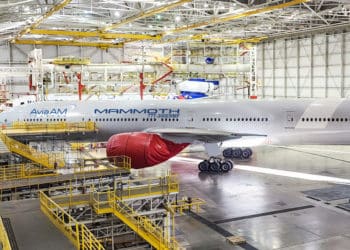Freighter aircraft leasing – Part II
Yesterday we began a multi-part series on freighter aircraft leasing with a look at the way in which a business that was originally fairly straightforward has become increasingly complex – you can see that discussion here. Today we look more closely at the lessors themselves, while tomorrow we will look at the freighter-leasing business from the perspective of the airlines.

At first glance, several things are clear:
- Over half of the 104 lessors have three freighters or fewer, and 50% of the total freighter portfolio is held by just fourteen lessors, each with ten or more freighters in their portfolios.
- There are some names on the list that sound a lot like the names of airlines – West Atlantic, ANA, LATAM, and several instances of DHL, for example. In each of these cases, the leasing company was set up by an airline or parent company to own aircraft operated by that airline. We include them, because as time has passed, they have broadened their customer list and now lease to other carriers as well. In addition, there are some unfamiliar names that fit the same description. Largus Aviation, for example, leases only to Amapola Flyg, while Frontera Flight Holdings’ only customer is Aeronaves TSM, and Helios Leasing’s only customer is Atlas Air Worldwide Holdings. This is not to say that they aren’t lessors, but rather that some lessors are created to serve a single customer.
- Another familiar name is Boeing. No surprise there, as Boeing, like Airbus, often takes back older aircraft as part of a deal with a customer ordering new aircraft, and has set up leasing subsidiaries to remarket these aircraft. (Airbus’ leasing subsidiaries do not currently have any freighters in their portfolios.)
And finally, if you compare the number of freighters in the lessors’ portfolios to the total number of freighters leased by airlines (we’ll have a complete listing of carrier’s operating leased freighters in tomorrow’s post), you will notice a significant difference. There are two reasons for this. First, of the 589 freighters owned by the lessors, 45 are currently in storage (but have a chance of returning to service). Second, when discussing freighters leased by carriers, we have chosen not to include older types such as 727Fs, DC-9Fs, 747-200Fs and several others. Likewise, we have chosen not to include types like the 747-400LCF and Tu-204C that are so specialized or so rare that they do not play a significant role in the commercial leasing market. Subtracting 45 stored units, and the 49 in-service-but-older types from the 589 in the lessors’ portfolios gives a total of 495 in the operators’ fleets.
But perhaps more interesting than what is shown in the lessor chart is what is not shown: passenger aircraft, for one thing. In addition to the 589 freighters in their portfolios, the 104 lessors in the chart also have 7,821 passenger aircraft, which puts their freighter holding at 7.5% of the total. On an individual level, the lessors’ focus on freighters varies from as little as 0.3% of their portfolio (Avolon, with one freighter and 288 passenger aircraft), to 100% for the twelve lessors that specialize in freighters. Of course there are another 284 lessors that have over 4,000 passenger aircraft and no freighters at all.
Geographic distribution is another matter not shown in the chart. The lessors listed are based in twenty-one countries, but, to put it simply, the distribution is anything but balanced. Lessors based in the US account for 51.3% of the freighters. Ireland-based lessors hold 11.2% and another 8.0% are held by Swedish lessors (led by West Atlantic’s aircraft management arm). After that, the share drops off quickly with lessors based in four countries – the UK, Netherlands, China, and Japan – holding between 3.4% and 4.8% each, and no other country is home to more than 3%.
And, as always, raw numbers can hide as much as they reveal. For example, looking at the lessor chart, you could be forgiven for thinking that lessors with very few freighters are probably not deeply involved in the freighter market – perhaps stuck with a handful of freighters they’d probably like to be rid of so that they could concentrate on the passenger market. But, as the old song says, it ain’t necessarily so. Consider companies like Guggenheim Aviation Partners and Kahala Aviation Group. With just four freighters each, they would seem to be little interested in the cargo side of the aviation business, but the reality is far different.
Both are active players, but rather than acquiring freighters and then holding them for years, they opportunistically acquire freighters, or feedstock for freighter conversions, and then opportunistically sell the freighters when the chance arises, either with or without a lease attached. So, while they might not have many freighters in their portfolios at any given time, the are very active players in the freighter market.
Why freighters?
Which brings us to the fundamental question: Why freighters? Why would a leasing company choose to have freighters in its portfolio? Or not have freighters?
Like many questions, this one has more than one answer, and we’ve looked at two of those answers already. Some lessors are little more than extensions of airlines, and if the airline group they are part of needs freighters, or perhaps even specializes in cargo, then, of course, the leasing arm will acquire those freighters.
Some lessors are freighter agnostic, but, seeing an opportunity will buy a freighter (or feedstock for freighter conversion) if the price is right, with the intent of selling it at a profit.
But what about the rest, the lessors which, while not specializing in freighters, do acquire some with the intent of keeping them for the long term? Or those which look at the freighter lease market and say “No way.”
A bit of history may illuminate this choice. Turn the clock back 15 years, and consider the two giants of the leasing world, International Lease Finance Company (ILFC) and GE Capital Aviation Services (GECAS). Both had huge portfolios of passenger aircraft (by far the greatest aircraft owners in the world), but neither was interested in freighters. A few years later, ILFC still had no freighters, but GECAS was on the way to becoming the biggest freighter lessor in the world.
What changed? Well, think about the date: Fifteen years ago was September 2001, and the attack on the World Trade Center in New York that month had a huge impact on the world’s financial markets and the airline industry. But it hit the two lessors in different ways, because of differences in their portfolios, and in their approach to the leasing business. ILFC was focused on widebody aircraft, and its business model was to continuously renew its fleet by buying new aircraft, leasing them, and then soon selling them with the lease attached. GECAS, on the other hand, had narrowbodies as well as widebodies, and tended to hold on to them for a much longer period, leasing them to second-tier carriers when the original lease to a first-tier carrier expired, then perhaps to a third-tier carrier. Eventually, usually at the time of a D-check, GECAS would sell these older units to a carrier or lessor looking for relatively inexpensive aircraft.
But in the aftermath of 9-11, there was no market for aircraft of any kind, and GECAS found itself with a fleet of middle-aged 737 classics that it could not sell as planned. Rather than take the impairment charge that would come with writing them off, GECAS put some of them through their required maintenance and had them converted to freighter configuration.
It was a gamble, and generated some immediate financial pain. But over the next few years, the company was able to lease them out profitably, and the gamble ultimately paid off. So, in a way, GECAS was dragged into the freighter leasing business against its will. But once in, the company realized that, managed carefully, a freighter-leasing business could be profitable, and has since created a team, the Cargo Aircraft Group, to focus entirely on the freighter side of the business, and with a mandate to keep the total number of freighters – in the fleet and on order – at around 90 units.
Tomorrow, we’ll continue with Part III, in which we look at the freighter leasing business from the perspective of the airlines.
To learn more about what lies behind a lessor’s choice to become involved in the freighter market, join us at the Cargo Facts Symposium, in Miami 10 – 12 March, where Rich Greener, who leads GECAS’ Cargo Aircraft Group, will participate in a session devoted to freighter aircraft conversion. To register, or for more information, go to CargoFactsSymposium.com.




